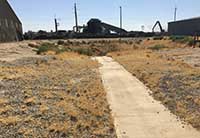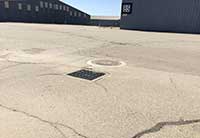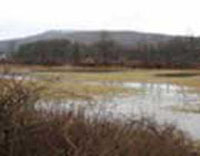Phase 1 Environmental Assessment Resources

Updated items from ASTM Standard E-1527-21:
As of November of 2021, EPA finalized a rule that the ASTM Standard E-1527-21 is a standard by which parties may comply with the "All Appropriate Inquiries" Rule, 40 CFR Part 312. EPA indicated that it does intend to propose an amendment to 40 CFR Part 312 removing reference to the E1527-05 standard. EPA does recommend that the new standard be used.
The standard does not have any substantial changes to the previous standard. Items such as vapor intrusion and regulatory file reviews are something that our company has conducted previously as part of a “common sense” approach to identifying potential significant environmental liabilities based on proper scientific analysis of available information that helps determine the potential for releases into the soil and/or groundwater at a property. The standard includes the following clarifications and revisions.



-
A term has been added called "Controlled Recognized Environmental Condition (CREC), " which is a recognized environmental condition resulting from a past release of hazardous substances or petroleum products that has been addressed to the satisfaction of the applicable regulatory authority (for example, as evidenced by the issuance of a no further action letter or equivalent, or meeting risk-based criteria established by regulatory authority), with hazardous substances or petroleum products allowed to remain in place subject to the implementation of required controls (for example, property use restrictions, activity and use limitations, institutional controls, or engineering controls).
This is typically associated with industrial properties that have been cleaned up to the satisfaction of the oversight agency, but have residual contamination and cannot be redeveloped for residential due to this "controlled" condition. The new E1527-21 Standard requires that the EP evaluate the past closure of a contaminated site and the environmental assessment data associated with the closure to confirm that the assessment meets current standards for unrestricted use. -
A simplified definition of a "Recognized Environmental Condition (REC)" is “the presence or likely presence of any hazardous substances or petroleum products in, on, or at a property: (1) due to any release to the environment; (2) under conditions indicative of a release to the environment; or (3) under conditions that pose a material threat of a future release to the environment.” The new ASTM Standard that recently went into effect defines Recognized Environmental Conditions as: (1) the presence of hazardous substances or petroleum products in, on or at the subject property due to a release to the environment; (2) the likely presence of hazardous substances or petroleum products in, on or at the subject property due to a release or likely release to the environment; or (3) the presence of hazardous substances or petroleum products in, on or at the subject property under conditions that pose a material threat of a future release to the environment.
The standard more clearly states that vapor intrusion contaminant pathway should be considered and states that ASTM E-2600 is not a requirement for a Phase I ESA. Again, this common sense approach has been already previously been performed by our company due to the potential significant liabilities that vapor intrusion into a building can create due to worker exposure, property devaluation and use limitations due to the presence volatiles in the soil and/or groundwater beneath the subject property. We will continue to consider vapor intrusion/encroachment as a potential liability due to the release of VOCs into the subsurface on or nearby to the subject property.
The User requirement of doing a judicial records review (through the clerk’s office) should be conducted by a Title professional. The User or Client continues to be responsible for having a title company search deeds for liens and activity and use limitations.
If the subject property or any adjoining property is identified in government records search, pertinent regulatory files and or records associated with the listing should be reviewed at the discretion of the Environmental Professional. If in the EP’s opinion such a file review is not warranted, the EP must provide justification in the Phase I report. As an alternative, the EP may review files/records from an alternative source(s) (for example, on-site records, user provided records, records from local government agencies, interviews with regulatory officials or other individuals knowledgeable about the environmental conditions that resulted in the standard environmental record source listing, etc.). Summary of information obtained from the file review shall be included in the Phase I report and EP must include opinion on the sufficiency of the information obtained. Again, this is something that our company has previously done to identify any potential significant environmental liabilities from known releases on or nearby to the subject property.
The standard also includes minor revisions to the User Questionnaire.

Additional Scope of Work Required by 40 CFR Part 312 for Phase 1 Environmental report.
-
Codified into federal law (40 CFR Part 312) on November 1, 2005.
In 2006, AAI produced a video discussing the new AAI Rule and Standard. This can be viewed on our Phase 1 Environmental video page.
Defines the term Environmental Professional (EP) and establishes qualifications for those performing Phase 1 ESAs (hold a current Professional Engineer or Professional Geologist license or registration from a state, tribe, or U.S. territory (or the Commonwealth of Puerto Rico) and have the equivalent of three years of full-time relevant experience OR 4 year Baccalaureate degree in any engineering or science field with five years of full-time relevant experience OR ten years of full-time relevant experience).In addition to interviewing current owners and occupants of the subject property, an interview with past owners and occupants must be conducted as necessary [Section 312.20(e)-(f)].Interview with neighboring or nearby property owners or occupants must be conducted if the subject property is abandoned.Previous use of the property needs to be described from the present back to when the property first contained structures or was developed for residential, commercial, agricultural, industrial or governmental purposes.More information requested from the User of the report (person for whom the report is being prepared).United States Environmental Protection Agency (EPA) rule requires identification of records of Activity and Use Limitations (AULs) and Environmental Cleanup Liens.In addition to the review of federal and state records, the ESA must include a review of (all) local and tribal records within the required search distance of the Property.Visual inspection of the subject property and adjoining properties is required (limited exemption with specific requirements if the subject property cannot be inspected).EPA rule looks at the relationship of the purchase price compared with the fair market value of the property which may indicate contamination at the property.Data gaps must be identified with the significance of the data gap with regard to the ability of the EP to identify conditions indicative of releases and threatened releases. The new E1527-21 Standard now includes a definition of what constitutes a, significant data gap, defining it as, a data gap that affects the ability of the environmental professional to identify a recognized environmental condition.Shelf life of Phase 1 Environmental report is specified as one year with some updates required after 180 days.
A copy of the published EPA rule can be downloaded by clicking the following link:
Download the EPA Rule.
Innocent Landowner's Defense
Entities that acquire property and had no knowledge of the contamination at the time of purchase may be eligible for the "innocent landowner" (ILO) defense to Superfund/CERCLA liability. For a more detailed discussion of this type of defense, we recommend reading the United States Environmental Protection Agency (USEPA) discussion here:
Innocent Landowners.
Phase I Environmental Site Assessment Advice
The ESA report is a specific study for the presence or potential presence of hazardous substance or petroleum product releases into the soil and/or groundwater, as well as, into structures, which can migrate through the floor to the subsurface. The Phase 1 ESA report does not include the study of building materials or building systems. To obtain a proper report, you should hire a geologist, engineer or scientist with knowledge of soil science, groundwater hydrology and regulatory conditions. The most common types of environmental liabilities that are found during real estate transactions are things like: leaking underground storage tanks, leaking hazard waste containers, spills and other subsurface contamination. These are the issues that need to be addressed in a more immediate manner, in order to occupy the property, redevelop or to get a loan or to buy/sell the property.
Standard for Phase 1 Environmental
Since the ASTM Standard is copyrighted, we cannot post a copy here. However, you can read a summary by clicking the following link and you can purchase a copy at the American Society of Testing & Materials, as well.
From Los Angeles to the Bay Area to San Diego to Oakland to San Francisco to Seattle to Denver to Dallas to Houston and to Nashville, Memphis, Knoxville and Chattanooga to Atlanta to Miami and Orlando, AAI conducts Phase I Environmental Site Assessments throughout the country regularly, also including: Austin, San Antonio, Spokane, Phoenix, Louisville, Birmingham, Huntsville, New Orleans, Charlotte, Raleigh, Indianapolis, New York, Columbia, Cleveland, Columbus and Cincinnati.


© AAI Environmental. All rights reserved.